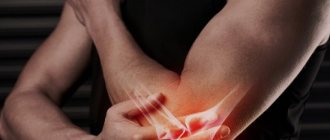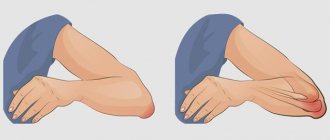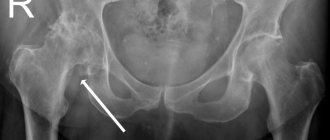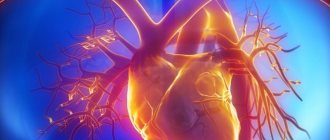Neuralgia refers to severe shooting pain that occurs due to a damaged or irritated nerve. Neuralgia can affect any part of the body, causing mild to severe pain. Certain medications and surgical procedures can effectively treat neuralgia.
Severe neuralgia can affect a person's ability to perform everyday tasks and can affect their quality of life.
Neuralgia has many possible causes, including:
- infections such as shingles, Lyme disease, or HIV
- pressure on bone nerves, blood vessels or tumors
- other medical conditions such as kidney disease or diabetes
- aging
This article examines the different types of neuralgia, their symptoms, and available treatment options.
general information
There are 12 pairs of intercostal nerves in the human body. They originate from the roots of the thoracic spinal cord and cover the entire chest, adjacent to the peritoneum, muscles, skin and mammary glands. The individual fibers of each nerve are responsible for tissue sensitivity, motor function and regulation of the functioning of all structures. Accordingly, damage or inflammation in any area can radiate pain to a variety of parts of the body.
The sensations can imitate diseases of internal organs: myocardial infarction, angina pectoris, pancreatitis, gastritis, cholecystitis, etc. In some cases, only a doctor can accurately determine the nature of the pain after a full examination. That is why it is important to seek help promptly if chest pain occurs.
Make an appointment
Forms
There is no special classification of the disease. There are several separate forms depending on the mechanism of occurrence:
- radicular: associated with irritation of the spinal cord roots at the point of their exit from the spinal column;
- reflex: associated with overstrain of muscle fibers at the site of the nerve passage.
There is also a classification of neuralgia depending on:
- causes: primary (associated with damage or inflammation of the nerve itself) and secondary (due to other diseases);
- localization: unilateral and bilateral;
- course of the disease: acute and chronic.
By what signs can you suspect spinal neuralgia?
Among the symptoms of this pathology, the main one is a sharp/dull “whining” along the nerve. It can be burning and also paroxysmal. During an attack, the following secondary symptoms are possible:
- shiver;
- secretion of a large amount of sweat;
- skin pallor/redness.
Often the first symptoms are muscle spasms, which are felt in the following situations:
- sudden/careless movement;
- too much physical activity;
- uncomfortable posture;
- hypothermia;
- cold;
- stressful situation;
- back/chest injuries.
It is not difficult to determine back neuralgia
Any of these reasons overstrains the spinal muscles, causing a reflex - spasms. The muscles may also begin to swell. The nerves there become irritated, causing pain. They intensify spasms, while pinching clusters of nerves near the spinal column. The latter makes the pain even worse.
When neuralgia of the back begins, the pain becomes stronger with the following actions:
Causes
The list of main causes of intercostal neuralgia includes:
- degenerative-dystrophic diseases of the spine: osteochondrosis, arthrosis, hernias and protrusions of discs, etc.;
- uneven or excessive load on the spine and back muscles (due to carrying heavy objects, poor posture, etc.);
- spinal column deformities (primarily scoliosis);
- diseases of the nervous system, in particular multiple sclerosis;
- infectious lesions: tuberculosis, herpes zoster, influenza;
- injuries of the spine and chest, surgical interventions in this area;
- tumors in the ribs, sternum, spinal column;
- taking certain medications;
- increased load on the respiratory muscles and abdominal muscles;
- increased intra-abdominal pressure, including during pregnancy.
In addition, intercostal neuralgia can occur secondary to other diseases, for example, pleurisy, pathology of the digestive system, kidney disease, thyrotoxicosis, and immunodeficiency states. Adolescents during the period of active skeletal growth may also experience similar symptoms.
Neurology in children
A difficult area in medicine that requires maximum care and highly qualified specialists. Neurology in children differs significantly from diseases in adults. The thing is that at a very young age the disease develops differently and is accompanied by unexpected symptoms and signs, which sometimes cannot even indicate its presence.
Neurological diseases in children can result from:
- injuries after difficult childbirth;
- unhealthy lifestyle of a pregnant woman (smoking, drug use, alcohol);
- hypoxia in the womb;
- predisposition - if the parents have genes for the disease;
- infections;
- the special location of the fetus in the womb (this often includes the entwining of the umbilical cord around the baby’s neck).
Although neurological diseases in children can appear at any age, most of them can be detected at the earliest stages and even during pregnancy. Early diagnosis allows you to start a course of treatment on time, which increases the chances of a full recovery and further normal development.
It is for this reason that young parents are strongly advised to show their child to the pediatrician regularly. In case of minimal deviations, he will refer you for examination to a neurologist and other specialists.
Symptoms
The main symptom of intercostal neuralgia is severe pain in the chest along the nerve. As a rule, it occurs suddenly and resembles an electric shock, gradually spreading along the ribs. The nature of the sensations can be different: shooting, pulsating, constant, burning or dull.
Deep breathing, turning the head or body, bending, pressing or simply touching the chest causes a pronounced increase in pain. In addition, characteristic signs of neuralgia are:
- persistence of pain at night;
- the ability to determine the epicenter of pain;
- redness or paleness of the skin in the affected area;
- a feeling of tingling, crawling or, conversely, numbness along the affected nerve;
- slight muscle twitching in the affected area.
As a rule, during an attack of neuralgia, a person tries to lie or sit motionless in a position in which the pain becomes slightly less.
If the cause of the pain syndrome is herpes zoster, first redness appears on the skin along the affected nerve, then numerous blisters that burst, forming crusts. After recovery, increased pigmentation remains in this area for some time.
Differences from myocardial infarction
Chest pain, especially on the left, can be a consequence not only of intercostal neuralgia, but also of more serious problems. The most dangerous is myocardial infarction. This condition requires emergency medical attention. The characteristic differences in pain are:
- occurrence against the background of physical, less often psycho-emotional stress;
- spread to the left arm, shoulder, left half of the neck and lower jaw;
- no changes when turning the body, bending, pressing on the sore area;
- decreased intensity when taking nitroglycerin and its analogues.
A heart attack is often accompanied by cold, sticky sweat, pale skin, dizziness, and fear of death.
It is important to remember that the signs of a cardiovascular accident and intercostal neuralgia are not always so radically different. An accurate diagnosis can only be made by a doctor.
Read also
Pelvic pain
Pelvic pain is pain in the muscles that form the pelvic floor and organs located in the small pelvis, caused by microtrauma, chronic deformation of the sacrococcygeal region due to anatomical…
Read more
Lambert-Eaton syndrome
The first description of the disease in the literature appeared in 1953. J. Anderson described a case from practice: a 47-year-old man with lung cancer experienced symptoms similar to myasthenia gravis. After tumor removal...
More details
Intracranial hypertension
Intracranial hypertension is a condition (syndrome) associated with increased cerebrospinal fluid (CSF) pressure inside the skull. The main symptoms of increased intracranial pressure are...
More details
Pinched nerve
This morning you arrived at your country house. While taking out a heavy and large bag of tools from the trunk of your car, you suddenly felt a very strong, shooting pain in your lower back on the right side. Raise...
More details
Restless legs syndrome
Restless legs syndrome - manifests itself as unpleasant sensations in the lower extremities, mainly in the evening and at night, forcing you to make relief movements with your legs, which leads to…
More details
Diagnostics
Intercostal neuralgia, regardless of the severity of the pain syndrome and its location, requires a full diagnosis. The following examinations will help distinguish it from other pathologies:
- questioning and medical history: identifying the nature of the sensations, the conditions of their occurrence, the duration of the attack, concomitant diseases;
- examination and palpation: the doctor evaluates the appearance of the skin, checks the reaction to movements, pressing, turning, bending, assesses the severity of reflexes;
- laboratory diagnostics: general and biochemical blood tests, general urine tests: allows to identify signs of damage to the heart muscle (tests for troponins, CPK), inflammation, renal pathology, gastrointestinal diseases, etc.; the exact set of tests depends on the location of the source of pain;
- ECG, ultrasound of the heart: allow you to identify or exclude cardiovascular pathology;
- X-ray, CT or MRI of the thoracic spine: helps to identify osteochondrosis, osteoporosis, tumors, hernias and protrusions of intervertebral discs, etc.;
- Chest x-ray: allows you to assess the condition of the lung tissue and identify signs of tumors;
- Ultrasound of the kidneys, abdominal organs (excludes relevant pathology);
- FGDS to exclude pathologies of the esophagus, stomach, duodenum;
- myelography, contrast discography, electrospondylography to assess the condition of the spine, intervertebral discs, spinal cord and its roots.
If necessary, consultations with narrow specialists and additional examinations are prescribed.
Make an appointment
Treatment
Intercostal neuralgia requires complex and often long-term treatment, including medication, physiotherapy, massage, etc.
Drug therapy
In the acute phase of the disease, therapy is aimed at relieving pain and improving the patient's condition. Depending on the specific clinical situation, the following are prescribed:
- non-steroidal anti-inflammatory drugs (NSAIDs): products based on diclofenac, nimesulide, ibuprofen, meloxicam and their derivatives; used in tablet, injection and local (creams, ointments, patches) form;
- analgesics: analgin and products based on it; like NSAIDs, they relieve pain;
- muscle relaxants to eliminate muscle spasms: mydocalm, etc.;
- group vitamins: milgamma, neuromultivitis, etc.; necessary to restore normal functioning of nerve fibers;
- sedatives to reduce the psycho-emotional component of pain and improve sleep.
If necessary, the following may additionally be prescribed:
- anticonvulsants: inhibit the passage of pain impulses;
- antidepressants to relieve tension;
- antihistamines and diuretics: relieve tissue swelling, especially relevant for pinched nerve roots;
- antiviral drugs for herpes zoster;
- glucocorticosteroids for persistent pain and severe inflammation that cannot be relieved by milder means.
Physiotherapy and exercise therapy
Physiotherapeutic procedures are prescribed after the acute pain subsides. Help speed up recovery:
- UHF;
- reflexology;
- magnetic therapy;
- electrophoresis;
- laser treatment;
- paraffin applications;
- mud therapy.
These procedures help improve blood circulation and metabolism in the affected area and accelerate the regeneration of nerve tissue.
Physical therapy exercises are prescribed after complete recovery. The main goal of gymnastics is to unload the back muscles. The complex is developed individually. The first classes should be carried out under the supervision of a specialist; in the future, home exercises are allowed.
Other treatments
Since very often the cause of intercostal neuralgia is pathology of the spine and spinal cord, the following are often used as additional methods of influence:
- acupuncture;
- manual therapy;
- therapeutic massage, including the use of warming agents;
- Shiatsu massage (acupressure);
- osteopathy;
- underwater traction and other techniques.
Like all medical procedures, these techniques are used only in a clinical setting and are carried out by specialists with medical education and the appropriate certificate.
Secrets of traditional medicine
In order for traditional medicine to bear more fruit, traditional medicine is also added to it. In order for such a supplement to bring positive results for neuralgia, the patient must first be carefully examined by a specialist who will determine what is causing the pain. After all, complex cardiac pathologies sometimes have the same symptoms as diseases of the nerves located in the chest, but it is useless to treat the former with herbal medicines; radical therapeutic methods are needed there.
To remove pain caused by neuralgia, you need to rub black radish juice along the path of the diseased nerves.
Green leaves of fragrant geranium are also a good analgesic . They are used like this:
- chop the leaves;
- apply them to sore spots;
- secure with a linen bandage;
- wrap it in something warm.
As a local analgesic, you can use wormwood infusion .
You can also make an infusion of sleep-herb . Just pour boiling water over a glass of the crushed plant and then let it brew. Then take it several times a day, 50 ml.
IMPORTANT! Fresh sleep grass is poisonous, so you can only use it dried.
You can also use club moss : pour boiling water over a teaspoon of the crushed plant, let it brew, take the result a tablespoon four times a day.
aspen bark help very well with this pathology .
As an external remedy, you can make an ointment to rub into painful areas using lilac buds and pork fat .
Folk remedies are real helpers in the fight against back problems
Grated horseradish helps with the following diseases:
- chest neuralgia;
- sciatica;
- articular rheumatism;
- radiculitis.
You can also make lotions with grated horseradish leaves, covering them with a woolen scarf so as not to chill the sore spot.
Peppermint is very useful for neurosis, cholecystitis, gastritis, as well as other disorders of the nervous system A decoction of it is made as follows:
- 1 tbsp. l. pour boiling water over mint;
- cook for 10 minutes;
- strain.
For results, take 0.5 cups at night.
black elderberry juice as a means of folk therapy . It should be mixed with good wine. Take a few tablespoons before meals. The course lasts seven days.
Hop cones and leaves may also be useful . Pour boiling water over them and leave. After this, take 100 ml three times a day.
A well-known folk remedy for neuralgia is an infusion of chamomile. It both has an analgesic effect and soothes irritation and constricts blood vessels. So it can be used for neuroses and seizures. This remedy can also be used to relieve severe pain caused by rheumatism.
The following mixture also helps with neuralgia :
- half a kilo of lemons;
- three tablespoons of apricot kernels;
- a little honey.
Grind the ingredients and mix thoroughly. The result should be a homogeneous mass. Take it orally a couple of times a day on an empty stomach.
There is another good recipe with lemon :
- Melissa;
- lemon zest;
- black currant leaves.
Fill everything with water. Insist. Strain. You can drink a third of a glass.
Even during a neuralgic attack, you can use the simplest but effective method : take a freshly hard-boiled chicken egg, cut it, apply it to the main source of pain, wait for the egg to cool. Here you need to be able to endure the pain of hot things: the egg must be applied while it has not yet cooled down, and it should just cool down on the body. But the pain eventually subsides.
Garlic oil , sold in pharmacies, is suitable as a prophylaxis for any disease of the peripheral nervous system. It is used to make a tincture for rubbing the skin. You just need to dilute Art. l. of this oil in 0.5 liters of vodka, and the infusion is ready.
Applying agave leaves to the sore spot is also useful. Immediately after this application, you can feel a burning sensation, and a strong one, but it does not last long. To prevent skin irritation, fresh cheese should be placed on the places where the agave was applied from time to time. And it’s best if it’s homemade.
Many folk recipes will help get rid of neuralgia of the back, but it is better if the patient uses them in parallel with taking medications
Neuralgia sometimes causes quite severe pain, so using traditional medicine alone without other methods may not help relieve it. Herbal remedies are best used in conjunction with drugs produced by the pharmaceutical industry and with electromagnetic treatment. It is also important to consider that even natural drugs have contraindications, so before using any of them, you need to consult a specialist.
Another nuance: for traditional medicine to work, it may well take a long time. It may be necessary to use them systematically, so if the pain from neuralgia lasts a long time, it is recommended to use folk remedies. Also follows:
- Healthy food;
- do not be stressed;
- avoid infections;
- protect yourself from excessive physical activity;
- make the immune system stronger;
- treat the spinal column in a timely manner;
- train muscles;
- avoid hypothermia;
- monitor the health.
Complications
Complications of intercostal neuralgia occur quite rarely, however, in severe cases, without appropriate treatment, the patient may encounter the following problems:
- severe spasm of the respiratory muscles, limiting inhalation and exhalation;
- inability to get out of bed due to significant increase in pain;
- excessive pain syndrome that is not relieved by conventional analgesics and NSAIDs;
- heart rhythm disturbances due to muscle spasms and nerve pathology;
- decreased leg mobility.
In addition, complications can be caused by attempts to be treated outside the clinic. Abscesses and cellulitis after acupuncture, paralysis and decreased sensitivity after manual therapy are not a complete list of problems. That is why you should not treat intercostal neuralgia either independently or with the help of dubious specialists.
Why does pathology begin?
There are many causes of pinched spinal nerves. It happens that it is provoked mainly by pathology of the spinal column. Moreover, in a small child this sometimes occurs due to some congenital anomalies.
This problem can develop for a number of reasons, but most often it occurs due to tumors
Here are the currently known causes of neuralgia:
- allergy;
- traumatic situations;
- alcoholism;
- tumors;
- spinal hernia;
- multiple sclerosis;
- osteochondrosis;
- pathologies of the heart and blood vessels;
- poisoning;
- sudden body movements;
- excessive physical activity;
- cold;
- problems with blood supply;
- hypovitaminosis;
- avitaminosis;
- stressful situations;
- hormonal imbalances, for example, diabetes mellitus, and a woman may also go through menopause;
- gastrointestinal diseases;
- problems with supplying the body with microelements;
- lack of activity.
Prevention
Prevention of intercostal neuralgia is mainly general measures aimed at strengthening the muscle frame and improving the health of the body. Neurologists recommend:
- lead an active lifestyle, play sports at an amateur level;
- minimize hypothermia and colds;
- watch your posture;
- avoid lifting heavy objects;
- maintain a high level of immunity;
- eat a balanced diet, if necessary, take additional vitamins, especially group B;
- treat chronic diseases in a timely manner;
- avoid stress, get proper rest and ensure yourself at least 8 hours of sleep every night.
Following these simple rules will significantly reduce the risk of developing intercostal neuralgia.
Preventing back neuralgia
The following rules must be followed to prevent this pathology from developing:
- reduce stress, drafts, and exposure to the cold to a minimum;
- Healthy food;
- support the immune system;
- Treat the spine in a timely manner in case of pathologies.
To prevent this disease, it is important to avoid exposure to cold and stress.
Treatment at the Energy of Health clinic
Doctors at the Energy of Health clinic will always come to the aid of patients with intercostal neuralgia. We offer each client:
- a full examination with consultations with specialists for an accurate diagnosis;
- individual selection of treatment regimen;
- services of a qualified chiropractor;
- own exercise therapy room for the most effective and safe exercises;
- modern methods of physiotherapy;
- massotherapy;
- drug blockades for severe pain syndrome.
Regular observation by a neurologist after the acute period of the disease has subsided will help prevent recurrent attacks.
Advantages of the clinic
In the neurology department of the Energy of Health clinic, every patient receives the highest level of specialists and modern equipment for diagnosing and treating diseases. We take an integrated approach to therapy and use not only medications, but also physiotherapy, exercise therapy and massage.
Treatment is prescribed only after a thorough examination and is monitored by a specialist until the patients fully recover. Adequate prices, convenient location, private parking - we do everything for the convenience of our clients.
If intercostal neuralgia interferes with living, walking and moving, do not delay treatment. Sign up for the Health Energy clinic and get rid of pain.
Let's sum it up
With proper and timely treatment, thoracic intercostal neuralgia is completely curable. Prevention of this disease is to prevent the development of “root cause” diseases, as a result of which neuralgia subsequently occurs. It is also necessary to constantly lead a healthy lifestyle in order to strengthen the immune system and maintain a healthy state of the body.
It is possible to get rid of such a disease, but it is worth starting treatment on time - this will help you forget about the discomfort as early as possible. You should not prescribe treatment methods on your own, so as not to worsen your health condition even more.








